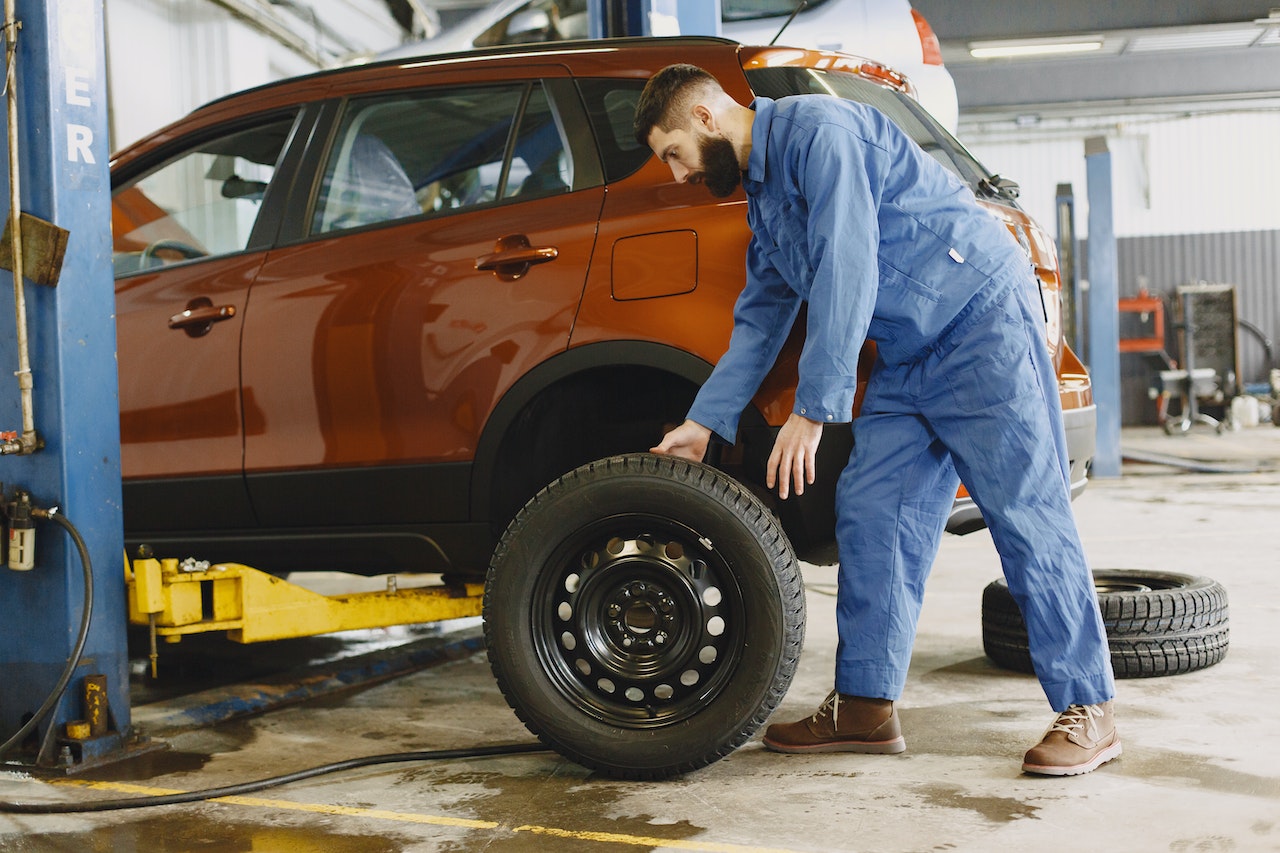Well, hello there, genius car owner! You’ve mastered the art of turning your car on, occasionally filling it up with that weird liquid called ‘gasoline’, and, if we’re optimistic, you’ve hopefully remembered to give it an oil change once in this millennium. But now, for the advanced course in “Not Ruining Your Investment 101”, let’s dive into the riveting world of tire rotation. Exciting, right?
Tire What Now?
Tire rotation. It’s not a mystical car yoga move or a secret handshake among auto mechanics. It’s quite literally the act of moving your car’s tires from one position to another. Why? So they wear out evenly. I know, mind-blowing. But here’s the funny thing: tires don’t wear out uniformly. Depending on your car’s drive (front, rear, all-wheel), certain tires bear more weight and stress than others. So, unless you’re aiming for a Flintstone-style vehicle, with square wheels, rotating those tires might be a good idea.
But When?
Now, onto the golden question: How often should you, the paragon of car maintenance that you are, rotate these rubber wonders? For the sake of your wallet and not being ‘that person’ stranded on the side of the road, here’s the guideline:
Most experts agree that you should rotate your tires every 6,000 to 8,000 miles (10,000-13,000 km). However, and here’s the fun part, your car manual (you know, that book in your glove compartment you use to flatten out gas station receipts) will have the manufacturer’s specific recommendation for your model. Yes, that’s right. The secret has been with you all along.
Why Should I Bother?
Glad you asked, hypothetical reader! Besides the obvious benefit of not wanting to replace tires prematurely, tire rotation also ensures:
- Better Gas Mileage: Square tires, besides being a fun hypothetical, would give a very bumpy ride. Uneven tires can reduce your fuel efficiency. Money saved on gas can be used on more exciting things like…more gas.
- Smoother Rides: Evenly worn tires mean smoother rides. It’s science. Or magic. Probably science.
- Less Frequent Tire Replacements: Tires are like cookies. If you nibble on one side more than the other, you end up with a half-eaten, sad-looking cookie way too quickly. By rotating, your tires wear out evenly, and you don’t have to replace them as often.
- Increased Safety: Uneven tire wear can lead to reduced traction, especially in wet conditions. And as exhilarating as uncontrollable sliding can be, most of us prefer our vehicles to be yawn-inducingly predictable.
It Sounds Complicated…
No, dear reader, it’s not quantum physics. And no, you don’t have to lift your car single-handedly and move the tires around like a game of musical chairs. Your local garage or car dealership can do this in no time. And the cost? Minimal, especially compared to the price of replacing tires more often or, heaven forbid, an accident.
So, rotate those tires, and keep them round. Your car will thank you, your wallet will thank you, and the world will be one step closer to being free from the menace of square tires.
Extra Pro Tips for the Aspiring Tire Rotation Aficionado:
- Mark Your Calendar: Just like your pet’s vet appointments or that annual check-up you keep forgetting about, set a regular reminder on your phone or calendar for tire rotation. If you’re especially forgetful, maybe even slap a post-it note on your dashboard.
- Pair It Up: Try pairing tire rotations with another routine service, like oil changes. This can make it easier to remember, and some auto shops even offer package deals. Kill two car maintenance birds with one stone!
- Check Tire Pressure: While you’re at it, ensure your tires are properly inflated. Under-inflated or over-inflated tires can lead to uneven wear and tear. Plus, the right tire pressure can boost your fuel efficiency. It’s like giving your car a little pep talk.
- Tire Inspection: Each time you rotate, give those tires a once-over. Look for any signs of damage, embedded objects, or uneven wear. It’s easier to address minor issues now than major ones later.
- Alignment Checks: If your car pulls to one side or if the steering wheel is off-center, you might need an alignment. Proper alignment ensures your tires wear evenly and your car drives straight. It’s like chiropractic care but for cars.
- Rotate Patterns: If you’re feeling especially nerdy, learn about the different rotation patterns based on your vehicle’s drive type and tire wear. Forward cross, rearward cross, and the X-pattern – sounds complicated but trust me, it’s just advanced car origami.
- Save Those Records: Keep a record of when and where you got your tires rotated. This not only helps you keep track but can be beneficial for warranty purposes or if you decide to sell your vehicle. Nothing screams “responsible car owner” like a well-documented maintenance log.
- It’s Okay to Ask: If you’re unsure about anything, ask your mechanic. There’s no such thing as a silly question (okay, maybe asking if tires are filled with chocolate is a silly question). But regarding their maintenance? Fair game!
- Last But Not Least: Don’t neglect your spare tire (if you have one). Every now and then, give it a check to ensure it’s in good condition and properly inflated. It might just save your day when you least expect it.
In essence, taking care of your tires is like taking care of your shoes. You wouldn’t run a marathon in unevenly worn-out sneakers, would you? Give your car the same respect.
Frequently Asked Questions (FAQs) About Tire Rotation:
It’s the practice of moving your car’s tires from one position to another. This ensures they wear out evenly, giving you better performance and longer tire life.
Technically, yes, if you have the necessary tools and knowledge. However, for safety and precision, it’s often best to let professionals handle it.
Besides the mileage recommendation, signs like uneven tire wear, vibration while driving, or decrease in gas mileage might indicate it’s time for a rotation.
Typically, it takes about 15-45 minutes, depending on the service center and the type of vehicle.
Not always. While both services complement each other, they’re distinct. Balancing ensures all parts of the tire carry an equal amount of weight. Always good to ask your mechanic if balancing is included or needed.
In vehicles with staggered tires, a traditional rotation isn’t possible due to size differences. However, they can be rotated side-to-side if they’re not direction-specific.
Yes, AWD vehicles often require a specific rotation pattern since all tires are actively engaged. Consult your vehicle’s manual or a mechanic for guidance.
Better late than never! While it’s best to stick to a schedule, starting rotations will still benefit the longevity and performance of your tires.
If your tires are showing signs of extreme wear or damage, rotation isn’t advisable. They might need a replacement instead.
Front tires tend to wear out faster because they handle most of the braking, steering, and, in many cars, power delivery. This is why rotation is crucial to balance the wear.
Absolutely! While these vehicles might distribute wear differently due to their drivetrains, tire rotation is still essential for even wear and optimal performance.



